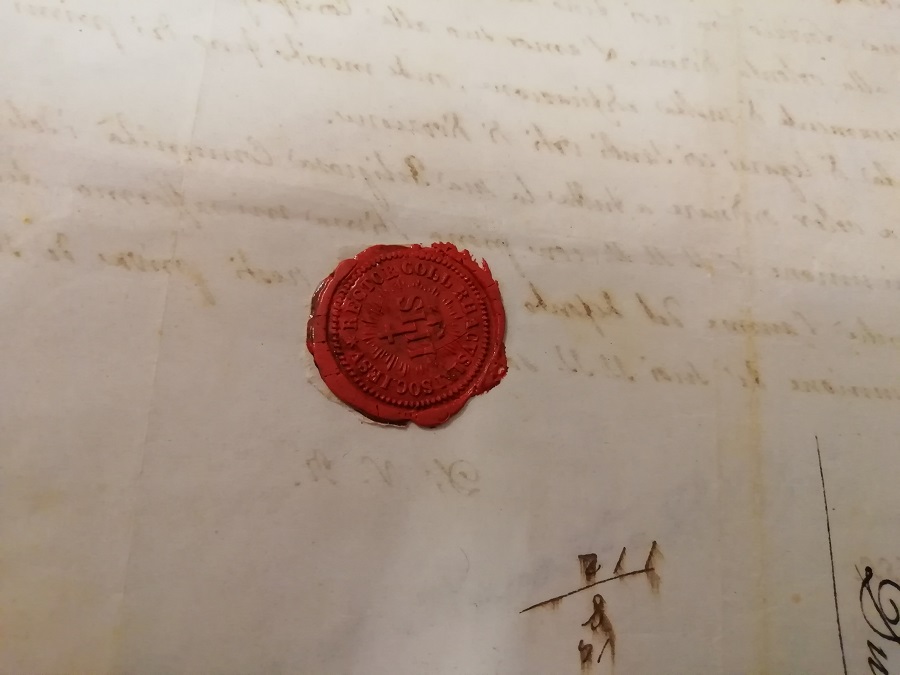Stamps from the past

Documents, deeds or letters issued by the Provinces of the Society of Jesus or institutions dependent on them have always been accompanied by a special stamp.
With the birth of the Province of Italy in 1978, most of the stamps of the Old Provinces fell into disuse and many of them have found their way into the archival fonds.
Silent witnesses of a centuries-old practice, many are made of metal, some of wood and show the signs of prolonged wear and tear, they are divided into ink and dry-erase stamps, the latter still in good working order.
Today we present some of these stamps and their history.
In the archives there are stamps for all the historical provinces of the Company in Italy, sometimes even of individual institutions, and to one of these belongs one of the oldest.
It is the stamp of Civiltà Cattolica, one of the oldest of the historic magazine, even more precious because it dates back to the Neapolitan period of its history, before its transfer to Rome.
Another stamp was found in the folders of the documents of the S. Brigida Society, founded by some citizens of Bergamo, including the brother of the future Paul VI, as we mentioned in our in-depth study in February.
In addition to the deeds of the Society and the correspondence of its members, the stamps used from its foundation to its final years have also been preserved.
These are just a few of the 40 or so stamps that, after years of an honourable career, now live a second life as silent witnesses to the countless deeds they helped to stamp and make official.
Then there are some stamps that have not come down to us, but which have left a trace of their passage, clearly imprinted on documents.
As in the case of letters that were sealed with sealing wax, a custom that characterised correspondence until the 19th century, with the 20th century and the advent of adhesive envelopes, sealing wax was used less and less.
The envelope was closed and sealed with a small amount of hot sealing wax, on which a stamp, a coat of arms of the sender of the missive, was affixed.
In this case, the seal is called ‘adherent’ because it is directly attached to the paper support.
This ensured not only the rapid recognition of the sender but was above all a guarantee of security, as it was necessary to break the sealing wax when opening the letter. If the sealing wax was not intact, the envelope had been opened.
These could be defined as ‘disposable’ seals, since the need to break them led to their destruction at the same time, and if a part was saved by opening – sometimes – it was not always preserved over time, since the sealing wax tends to detach itself from the dusty support over the years, crumbling away.
In the archives, however, a still perfectly intact sealing wax was found, as can be seen in the photo, on which was affixed the personal stamp of the Rector of the College of Ragusa – now a town in Dalmatia.
Some of the stamps – made of wood and metal – are currently kept on permanent display in the showcase of the historical archive of the Euro-Mediterranean Province of the Society of Jesus.
Maria Macchi











